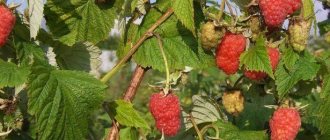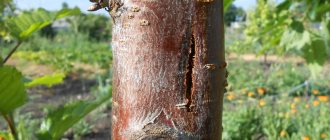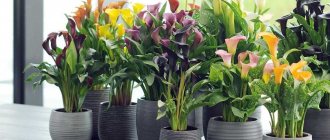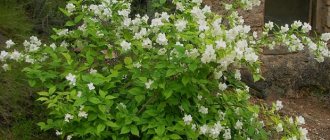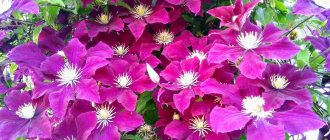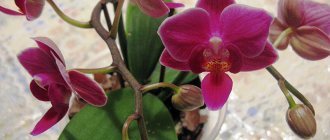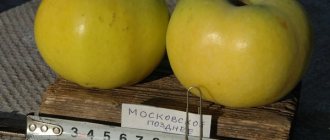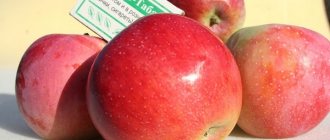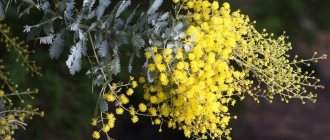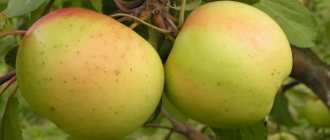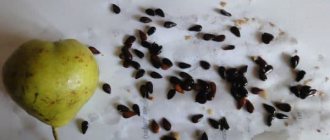Why doesn't indoor jasmine bloom?
The reason for this is one of the factors or a combination of them:
- Violation of the thermal regime. If the room temperature is above 24 degrees or below 14, lush flowering will not be achieved. The buds will either fall off immediately after ovary, or will not be able to set at all. To avoid such moments, restore the required temperature to 15-22 degrees. Based on the specific case, you will need to either shade the plant from excessive light and move it away from heating devices, or, conversely, place it closer to the sun.
- Lack of humidity. Jasmine dries, its leaves begin to curl, deform and fall off. You will need more frequent, but not too intense watering (every 1-2 days in summer, twice a week in winter) and air humidification. You should not spray the leaves.
- It happens that buds appear on the bush, but subsequently fall off. The florist is tormented by the question of what happened to his jasmine, but all he had to do was increase the lighting. The first buds form at the end of winter. During this period, it is transferred to a warmer and brighter place. At the same time, you should not place a pot of jasmine directly on the windowsill above the central heating radiator, otherwise you will not be able to enjoy the fragrant flowering. Place the flowerpot in a well-lit room with diffused light, watch the soil - it should not dry out. Spray the air around the jasmine with water every 2-3 days and soon you will be able to enjoy flowering.
- Hard water. If you use tap water for irrigation, then you should not be surprised why there is still no flowering. The way out of the situation is to let the water for irrigation sit for at least 2 hours or use rainwater. Filtering the water won't do anything.
- Soil acidity. Jasmine can grow beautifully, reach luxurious sizes, but never bloom just because the soil in which it grows is completely unsuitable for this. This shrub does not like neutral and alkaline soils. Transplant your jasmine into a different soil mixture: mix turf soil, sand and leaf humus (3/1/1) or purchase special acidic soil from a herbal store.
- Incorrect landing. If the neck of the trunk is buried more than 3 cm into the soil, there will be no flowers on the jasmine. Replant your flower so that the section of the trunk where the plant's roots begin is on the surface.
The correct regime is necessary not only for the luxurious flowering of jasmine. These are important conditions for the life of the plant, including growth and development.
What to do if mock orange does not bloom
There are times when jasmine bushes stop blooming. The reason for this condition is that they are not properly cared for or were planted incorrectly.
- Most often, the plant stops blooming due to excessive moisture. The roots begin to rot and the bush disappears.
- The bush may not bloom due to the fact that it was not covered for the winter and the buds on annual shoots simply froze.
- If the summer is too dry and watering is untimely, the bush also cannot produce buds for flowering.
- Sometimes a shrub just doesn't like the planting site or soil and doesn't want to produce color. If, a couple of years after planting, the mock orange has not bloomed, you should try to replant it according to all the rules and take good care of it in the future.
Now you know how mock orange is grown, and also for what reasons it may not bloom. It is recommended to consult with experienced gardeners before planting a jasmine bush in your garden.
Jasmine pests - who are they and how to deal with them?
When indoor jasmine grows and develops normally in your home, it is practically not afraid of diseases. Pests cause much more problems. They can start either as a result of failure to care for shrubs, or they can move from other plants in the house.
Carefully! A beautiful flower brought home can destroy all the nearby flowers. Be attentive to the copies you buy, carefully choose where to sell!
The appearance of pests on a plant can lead to its death. More often than others, indoor jasmine is attacked by spider mites and whiteflies.
Whitefly larvae, green in color, cling to the leaves from the underside. They suck out the cell sap, leaving behind sugary particles. Whitefly-infected leaves begin to curl, then turn yellow and fall off. Large colonies of small white midges accumulate on the plant.
Preparations sold in flower shops are successfully used against whiteflies. The most effective:
- Actellik – 1 ml of the drug per 500 milliliters of settled water,
- Intavir in the same proportion
- Agravertine from 1 ml to 1.5 ml of product per 500 milliliters of water.
The web that red mites form is also a negative sign. They are located in the internodes; whitish grains of excrement are deposited on the back of the leaves. In this case, the jasmine leaves actively turn yellow and fall off. To combat this parasite, a soap solution prepared according to the above recipe is also suitable. If the plant is severely affected and the solution does not help, then you need to spray the jasmine twice a week with an aqueous solution of 0.15% Actellik (dilute 1.5 ml of insecticide in 1 liter of water).
Another insidious pest of indoor jasmine is the green leaf weevil. Its larvae settle on leaves, feeding on their sap. Due to their vital activity, abundant leaf fall is observed. This can lead to drying out of the entire bush. To combat this parasite, the same insecticides are used as for the above-mentioned pests.
Aphids are very annoying to indoor jasmine. It entangles the tops of the bush with a thick white cobweb, the places where new leaves are formed. As a result, the growth rate slows down significantly. Without proper care, the plant may stop developing and dry out. You can fight aphids using chemicals, for example, Iskra Bio 2 ml per liter of water.
Other Possible Flowering Problems
When growing jasmine there is a risk of other problems. Thus, formed buds may fall off. In addition, there is a danger of the appearance of too small inflorescences.
Shedding of buds
The following factors can lead to bud drop:
- the sun is too bright;
- damage to the bush by parasites;
- temperature violation;
- development of diseases.
Small flowers
Sometimes a situation arises when the buds are formed, but are too small in size. Most often this is due to insufficient soil fertilization. Planting jasmine in a shady place can also be a provoking factor.
Pest control at home
If you do not want to use chemicals, then it is permissible to use safer methods to combat parasitic insects. They are effective when the number of insects and the plant area affected by them are small.
You can wash the leaves with a solution of water and laundry (brown) soap (1 half tablespoon of soap grated on a coarse grater per 2 cups), the solution should be at room temperature. Such measures give positive results in the fight against ticks and whiteflies.
You can defeat aphids and weevils using an infusion of potato tops. Place 2 kg of fresh potato tops in a ten-liter container with water and leave for 10 days. Then the resulting infusion is filtered and sprayed with jasmine leaves every 5 days, no more than three times.
With proper care, indoor jasmine will become your favorite and a real pearl of your flower collection. But because of the heady, rich aroma, beware of installing it in the bedroom and children's rooms.
Reasons for the lack of flowering and growth and ways to eliminate them in garden jasmine
My bush cannot be called young anymore. Of course, I did pruning more than once, and took other measures, but still the flowering stopped. It's a pity, because the flowering is very fragrant. I found a lot of interesting information on this topic, and I decided to share it. After all, jasmine or mock orange, as it is also called, is a symbol of the Russian garden, and it is impossible to imagine more than one plot in the country without it.
Why doesn't jasmine bloom? We learn how to care for a flower correctly and trim it in spring and autumn
Indoor jasmine is an incredibly beautiful plant, on which small white or pale pink buds bloom with the onset of spring. This flower is known not only to flower growers. Almost everyone has drunk jasmine tea at least once in their life, which has the aroma of the plant’s buds. However, jasmine is a rather finicky plant that requires certain maintenance conditions, pruning and replanting. We will tell you in detail about all the intricacies of caring for a jasmine bush in our article.
At what age does jasmine bloom?
Depending on the variety, the plant begins flowering at 2–4 years of age. However, this does not mean that it will fully bloom at this age. Growing conditions may not be suitable enough for the jasmine and it will drop its buds. In this case, before the next flowering period, it is necessary to “work on the mistakes” and help the plant show all its beauty.
Various jasmine varieties bloom at certain times of the year, namely:
- spring - from early spring to late summer;
- summer - from June until the first frost;
- winter - from the beginning of the year to mid-spring.
Jasmine - home care
Any plant requires attention and certain growing conditions. Likewise, when growing indoor jasmine at home, you must follow some care rules. These include:
1. Lighting
. The flowering plant loves light, but does not tolerate direct sunlight. Under the scorching sun, the buds that have not yet opened dry up and fall off. The flower will grow best on the windowsills of eastern and western windows. There will be little light for it near the northern windows, and if the bush is placed near the southern window, then it will definitely need to be shaded.
2. Temperature
. Indoor jasmine at home should be kept at an air temperature from +18C to +25C. One of the conditions for keeping a plant in winter is to lower the room temperature to +8C-+10C. This is necessary for its successful flowering in spring and summer. Only Sambac does not need a cool room.
3. Air humidity
. On dry and hot days, it is recommended to spray the plant. In summer it can be taken out into the garden or onto the balcony.
4. Watering jasmine
. When kept in a warm room, watering should be regular and abundant. Use well-settled soft water at room temperature. The presence of lime in it is undesirable, so if it is present, the water becomes acidified. To do this, add a few drops of citric or acetic acid. Watering is done only after the top layer of soil has dried out.
5. Top dressing
. In the spring, with the beginning of the growing season, the plant is fed once every 7-10 days with special complex fertilizers for flowering plants.
6. Soil for replanting
. In flower shops, plants are sold in peat-filled shipping pots. Therefore, after purchasing jasmine, as soon as the flower adapts to new home conditions, it will need to be transferred to nutritious soil. To do this, mix clay-leaf soil and peat (3:1) or clay-leaf and deciduous soil and sand (1:1:1). If you can’t prepare the soil yourself, you can always buy it. In the future, the young bush will need to be replanted every year, and the adult plant once every two to three years. The new pot should be 2-3 cm larger than the old one.
Basic resuscitation and prevention measures
Mock orange does not bloom, you need to know what to do and how to restore health to the plant in order to prevent problems in time. In order for any plant to delight with buds, it is necessary to provide it with proper care, planting and replanting. The flower should be watered regularly, fertilized with minerals and loosened the soil.
Regular and terry species must be processed taking into account the following rules:
- The plant should be fertilized twice during the growing season. To improve flowering, it is necessary to add potassium-based fertilizers. In summer, fertilize with phosphorus compounds. It is best to choose liquid fertilizers.
- Garden jasmines are pruned in July. Thickened shoots should be removed so that the young ones can develop normally. They don’t forget about rejuvenating the bush. If the plant is more than 10 years old, the branches must be removed at the root. This procedure provides a powerful stimulation of flowering and further growth.
- Before wintering, the soil must be mulched with peat or pine needles to a depth of 3-4 cm.
- When jasmine blooms, it is necessary to carry out preventive treatment against pests.
The year in which mock orange blooms depends on the propagation method, as well as on care conditions. The more accurately a person follows the instructions, the better for the flower. And the greater the chance that it will decorate the garden with fragrant inflorescences.
How to prune jasmine correctly?
In early spring, so that the bush begins to grow intensively, it is recommended to prune it. After pruning, additional side branches will begin to form, on which fragrant flowers will soon appear and bloom. The bush will turn out lush and beautiful.
The pruning procedure is carried out in early or mid-March. All shoots on the bush are shortened by 40-60% of their length. Poorly developed, damaged, elongated and dry shoots are removed completely.
In order for the young plant to bush and develop better, it is recommended to pinch its shoots every month from spring to autumn. The branches should remain 50-60 cm long.
Please note that the time for trimming indoor jasmine depends on its type:
1. Sabak
requires shortening branches 2 or 3 times a year. Its shoots are pruned quite a bit.
2. Vigorously growing shrubs
, the branches of which grow more than a meter in length over the season, are pruned both after flowering and before the start of active growth.
3. Jasmines that bloom in winter
are pruned at the beginning of the growing season in the fall.
Features of caring for mock orange
Like every plant, jasmine needs not only regular watering and nutrition, but also pruning and loosening the soil around the bush.
How to feed correctly?
Both mineral fertilizers and organic matter are suitable for the bush. This is due to the fact that regular pruning and fairly rapid growth require a lot of nutrients.
Experienced plant growers recommend, if possible, feeding jasmine no less than 3 times during the spring-summer season:
- Right after winter.
- Before the flowering process.
- Immediately, as soon as the bush has faded.
Superphosphates, potassium fertilizers and wood ash will be useful for jasmine, which promote lush and abundant flowering. Nitrogen fertilizers can cause lush green growth and reduce the number of inflorescences.
A good remedy for shrubs would be an infusion of nettles: the grass is filled with water, and the container is placed in the shade for 10 days. Superphosphate is added first. The container must be covered on top. When the infusion is ready, it must be diluted with water and watered each jasmine bush. This feeding will allow the bush to bloom and grow just fine.
How to trim?
Timely pruning of old and diseased shoots allows strong and healthy shoots to develop stronger, and next year flowering will be more abundant. You can cut off the apical parts of the shoots so that the bush grows wider.
Indoor jasmine - propagation
Jasmine bush can be propagated by layering and cuttings. The simplest and most convenient way is propagation by layering. But cuttings are more productive, but they require certain knowledge and experience.
Reproduction of jasmine by layering
This method of propagating jasmine can be used in spring and summer. To implement it you need:
1. Make a small cut on the outermost shoot.
2. Dig the shoot into the hole at the cut site and cover it with earth.
3. The place where the branch is buried should be watered regularly.
4. In autumn or spring, when young shoots emerge, the cuttings are separated from the bush and planted in a separate pot.
Propagation of jasmine by cuttings
After pruning the bush, the remaining cuttings can not be thrown away, but used to propagate jasmine. In summer, young green shoots can be used for cuttings.
1. The top of a powerful mature shoot with two internodes is cut off. The bottom cut is made at an acute angle. The length of the cutting should be from 10 to 14 cm.
2. Prepared cuttings are planted in a container with wet sand or a mixture of peat and sand (1:1). They are buried to a depth of 1.5-2 cm. The container is covered with glass or polyethylene on top. The petioles can first be simply placed in water, and when they give roots, they can be planted in nutritious soil.
3. Cuttings should be ventilated and sprayed every day. Roots most often appear after about a month. Young plants are planted in separate containers with a diameter of 3-5 cm. The soil for them should consist of peat or leaf soil and sand (3:1). You can use soil mixture from the store.
4. Plants are placed in a well-lit place without direct sunlight. It is necessary to ensure that the soil is moist at all times. For this, daily spraying will be sufficient.
5. When the roots grow and it is clear that they have entwined the entire substrate, the young bush is transplanted into a pot with a diameter of 8-10 cm.
Jasmine propagated by cuttings up to three or four years of age is transplanted every year into a new pot slightly larger than the previous one.
Pests and diseases of jasmine
The flower can be affected by aphids, indoor mites, and leaf weevils. All these pests feed on the sap of the plant, which begins to wither and shed its leaves and stops blooming. If pests are not identified and removed in time, the plant may die. Therefore, the leaves need to be inspected regularly:
· aphids are quite large and are located on the tops of shoots;
· spider mites can be recognized by the presence of cobwebs and small dots between the leaves or on their reverse side;
· Weevils live in the soil, and their caterpillar-like larvae feed on the juice of leaves.
Pests should be controlled with special insecticidal preparations, which are used according to the instructions supplied with them.
Mistakes when watering
Mock orange and jasmine - what's the difference
Jasmine does not like very wet soil. If water accumulates in the place where you plan to plant the shrub, you must first prepare the drainage. To do this you will need:
- crushed stone;
- pebbles;
- gravel.
All components must be placed at the bottom of the hole, then covered with earth on top.
The reason why mock orange does not grow may be a lack of moisture. A plant that lacks water begins to wither and then gradually dies.
Description of the plant
Jasmine can be grown both in the garden and indoors. It is a shrub with thin shoots. They bear trifoliate leaves of a dark green hue - odd-pinnate. The ends of the stem are crowned with beautiful flowers, which can be single or umbellate. They gather in shields. The shades of the buds are white, yellow and pink. They depend on the type of plant and area of growth. After flowering, jasmine produces fruits that are not eaten.
Jasmine has a very pleasant and delicate aroma. But growing it in a small room is not recommended, as the smell of the flower becomes very intense and can lead to headaches.
General information about the flower
In the middle zone, jasmine is grown exclusively as a houseplant. Since these liana-like shrubs are not frost-resistant and hardy in our conditions.
When choosing a support for a flower, it does not have to be large
To grow indoor jasmine, arches and supports are required, as it has long climbing shoots. All varieties of the crop have flowers that are collected in inflorescences. Depending on the type, the flowers are white, yellow, or pink.
Therefore, it is not recommended to place strong-smelling jasmine near the bed.
Varieties
There are more than 300 plant species in the world. We invite you to consider the most common ones. They may differ not only in appearance, but also in care features.
- Jasmine flattened. It is small in size. The leaves are lightish, lanceolate. This species has flowers of a delicate purple hue and a persistent aroma.
- Shrub jasmine. A shrub with flexible and smooth shoots. Grows in height up to 1.5 meters. Leaves are paired. Flowering in the form of half-umbrellas on the sides of the shoots.
- Jasmine Lerata. The adult species reaches 3.5 meters. Its stems have dark green leaves and small white buds with a mint aroma.
- Multi-flowered jasmine. Climbing plant. The leaves are covered with grayish hairs. Star-shaped flowers are collected in inflorescences and are located along the entire length of the shoots. Flowering occurs all year round. Has a pleasant aroma.
- Medicinal jasmine. A weaving plant with long shoots and paired smooth leaves located on them. The flowers are white, fragrant, located on stalks. This species is used for medicinal purposes.
- Jasmine sambac. A climbing species with leathery, oval-shaped leaves and white double flowers that have a very strong aroma. The buds are collected in clusters. Blooms all year round with good care.
- Chinese jasmine. It grows as a vine or shrub with shoots up to 10 meters and has white flowers with a pronounced aroma.
Types of jasmine: multifloral, sambac, holoflorous
Among the most common and most interesting types are:
- Sambac is the most unpretentious variety and tolerates warm winters well. Its shoots grow up to 6 meters. White, fairly large flowers with a pronounced aroma are collected in racemes. Blooms from early spring to mid-autumn;
The remarkable thing about the Sambac variety is its unpretentiousness, compared to other varieties of jasmine.
- Multi-flowered jasmine is characterized by strong branching. Can reach a height of about 2 meters. The buds are pink in color, and the flowers are white after blooming. It has the strongest aroma among other varieties. It begins to bloom at the end of winter and ends in August;
- Holofloral jasmine branches weakly, and there are few leaves on the shoots. In winter, the leaves fall off completely or partially. The flowers are bright yellow and reach a diameter of about 3 cm. Blooms from January to April .

